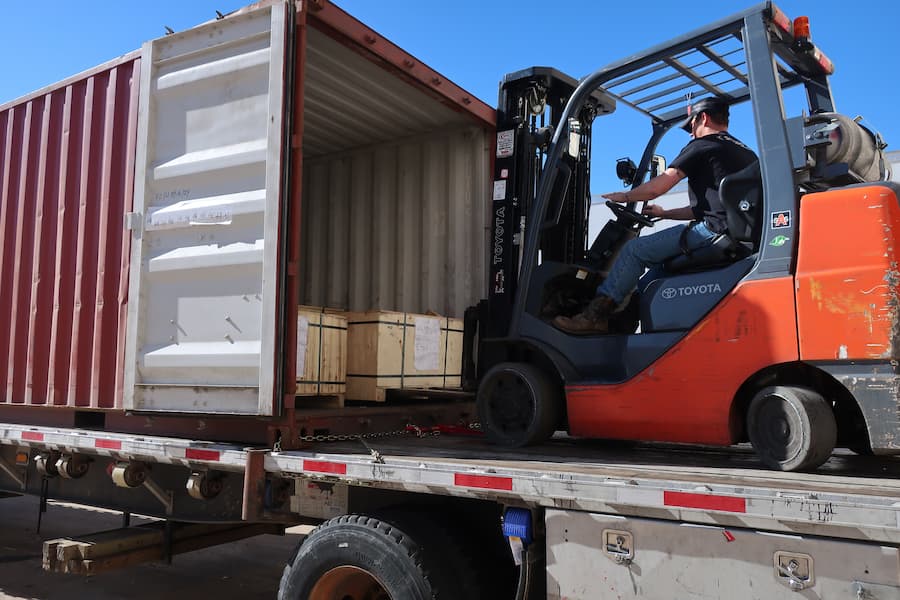Drivers need to sleep. And use the restroom. And eat. And they need to do it without fear of racking up hours of violations. That’s what personal conveyance guidelines are supposed to address. And on May 31, 2018, the Federal Motor Carrier Safety Administration (FMCSA) issued new guidance regarding personal conveyance that should help to keep truck drivers safer by explaining and expanding the definition of personal conveyance.
What Exactly Is Personal Conveyance?
The basic definition hasn’t changed. According to the FMSCA’s guidance, “Personal conveyance is the movement of a commercial motor vehicle (CMV) for personal use while off-duty. A driver may record time operating a CMV for personal conveyance as off-duty only when the driver is relieved from work and all responsibility for performing work by the motor carrier.” The off-duty distinction is the crux of the matter: No business-related work can take place during time counted as personal conveyance.
Why the New Guidance?
Personal conveyance guidelines were last addressed in 1997, but since the recent Electronic Logging Device (ELD) mandate took effect, hours of service requirements have been monitored more closely. Because of this, drivers, carriers, and transportation advocates have been asking the FMSCA to weigh in on issues surrounding the personal conveyance rule, like the fact that drivers are sometimes given hours violations when trying to find safe places to rest. Since the ELD mandate was put in place to keep drivers safer by enforcing hours limits, the FMSCA took quick action on the safety-related complaint. In a press conference call, Joe DeLorenzo, director of the Federal Motor Carrier Safety Administration’s Office of Enforcement and Compliance, explained that the new guidance focuses on the reason the driver is driving while off-duty. “Previously we had said, ‘Do the best you can, but it’ll put you in hours violation. But when you analyze why you are making that move—to get to a safe location to get your required rest—that can be done during personal conveyance. Say I get woken up in the middle of the night because law enforcement wants me to move my truck. Again, the purpose of that movement is not to advance the load or get closer to where you’re going; the purpose is to get somewhere safe in order to take rest.”
What’s Changed?
The 1997 guidance excluded the use of “laden” vehicles as personal conveyance. The new guidelines state that a CMV can be laden or unladen during personal conveyance. In other words, drivers can use their trucks—full or empty—for personal conveyance. Semi drivers no longer have to unhitch trailers, and drivers who operate “straight” trucks that can’t unhitch from their trailers and cargo can also take advantage of the personal conveyance allowance. Drivers can also claim personal conveyance if asked by a safety official to move during off-duty periods, providing they go “no farther than the nearest reasonable and safe area to complete the rest period.”
What’s Clarified?
The new guidelines also illustrate the meaning of personal conveyance by providing “examples of appropriate uses of a CMV while off-duty for personal conveyance,” including (but not limited to):
- “Time spent transporting personal property while off-duty.”
- “Time spent traveling from a driver’s en route lodging (such as a motel or truck stop) to restaurants and entertainment facilities.” The guidance stresses that the driver must be off-duty, and the reason for travel must truly be personal, not to get the load closer to its destination.
- “Time spent traveling to a nearby, reasonable, safe location to obtain required rest after loading or unloading.” The FMCSA noted that “the driver may not be aware of the direction of the next dispatch and that in some instances, the nearest safe resting location may be in the direction of that dispatch. If the driver proceeds to the nearest reasonable and safe location and takes the required rest, this would qualify as personal conveyance.” DeLorenzo warned that drivers should not take undue advantage of this guidance in order to get their loads further down the road: “The next reasonable safe location with parking available is where you have to be.”
Questions about commutes came up so frequently that the FMSCA addressed the subject twice, listing the two scenarios below as examples of appropriate personal conveyance:
- “Commuting between the driver’s terminal and his or her residence, between trailer-drop lots and the driver’s residence, and between work sites and his or her residence.”
- “Authorized use of a CMV to travel home after working at an offsite location.”
According to DeLorenzo, “If you truly are going from home to work—to the yard to pick up a trailer or to somewhere like that—that personal time driving to work is considered to be a personal conveyance, and the same thing on the opposite end.” He added that returning to the terminal is not considered personal conveyance, but rather the continuation of an interstate move.
These are just a few of the FMSCA’s examples, and the Administration is quick to note that there may be other situations that would fall under personal conveyance. For instance, DeLorenzo said that if a longer-than-expected delivery used up all a driver’s available hours of service, and he was then asked to leave the property, he could use personal conveyance to get to the nearest safe spot to continue his required off-duty time. Again, DeLorenzo warned that the allowance can’t be used as an excuse to get to another location that would advance the job.
In many ways, that’s the core of the new guidance. In order to be a personal conveyance, a move must be made for strictly personal reasons, not to “enhance operational readiness.”
Good to Know
The new guidelines also state that “A driver may resume on-duty status immediately after an off-duty status, regardless of the location of the CMV,” so that the driver doesn’t have to return to the last on-duty location after a personal conveyance trip.
The FHMCSA purposely excluded mileage or time restrictions from the guidelines so that carriers could impose their own rules. “Just because something is allowed by the law doesn’t necessarily mean it has to be allowed by the carrier,” said DeLorenzo, who also urged carriers to have specific policies regarding personal conveyance.
And this new guidance isn’t just for drivers and carriers. It’s also for law enforcement officers so that they know not to cite drivers for hours violations when they’re just trying to find a place to rest. After all, as the FHMCSA stressed, the aim of the new guidance is safety.
That’s one of our goals as a freight broker, too, to make sure that goods are safely transported in professional and cost-efficient manner.
At Next Exit Logistics, we earn the trust of our clients with efficiency, transparency, and security. Also, we understand how to handle freight services for unusual, oversize, or overweight shipments and are certified to arrange the shipment of hazardous materials. To learn more about our services, call Next Exit Logistics at 866-624-2661 or contact us via email.




